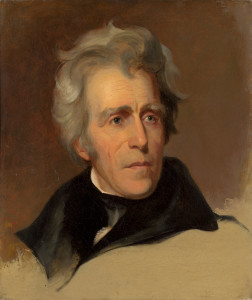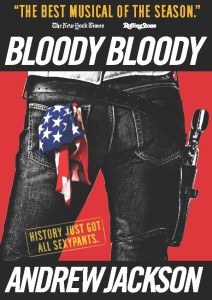
This weekend I was quoted in a column by Gail Collins of the New York Times about the campaign to replace Andrew Jackson on the twenty-dollar bill. WomenOn20s certainly seems to be gaining steam, but here’s hoping that this also sparks a broader conversation about US paper money, which is going on a hundred years without a significant redesign, whomever the personages pictured. For whatever reason, many Americans seem to regard the look of their currency as sacrosanct and any change is bound to be controversial, but it seems past time for something to happen.
As I pointed out in the column, Australia equitably has a woman and a man on each of their paper money denominations. Australians have also embraced a broader view of the type of person worthy of such an honor by choosing figures beyond the world of politics–artists, poets, inventors, etc. Making room for more and different kinds of people on American money would seem to be a worthwhile goal and might spark an interesting national discussion about who and what we value about our country. In this vein, the Times is hosting a fascinating Room for Debate discussion on potential candidates for the twenty. Collins cites me as supporting Amelia Earhart, but this was something that I mentioned in the course of a larger discussion about the politics of finding a replacement for Jackson. Quite simply, it needs to be a figure that can both garner popular support and be palatable to those on both sides of the political divide. I think, to take one example, that Margaret Sanger’s sexual politics would excite enough consternation to doom her candidacy. From a purely practical perspective, I think Amelia Earhart is an excellent candidate. She is someone who is a feminist icon, but also seems to be politically non-controversial. Her name is a familiar one to most Americans and her pioneering efforts in aviation certainly provide a strong narrative to mobilize around. Again, she is not my preferred candidate all things considered, but she seems like a more practical and possible one than some of the other names being bandied about.
From a purely practical perspective, I think Amelia Earhart is an excellent candidate. She is someone who is a feminist icon, but also seems to be politically non-controversial. Her name is a familiar one to most Americans and her pioneering efforts in aviation certainly provide a strong narrative to mobilize around. Again, she is not my preferred candidate all things considered, but she seems like a more practical and possible one than some of the other names being bandied about.
For historians, I think this discussion is an interesting reflection of the vagaries of historiography and the volatility of the popular historical imagination. As numerous commentators have pointed out, when the decision was made to put Jackson on the twenty-dollar bill in 1928, his reputation was that of a war hero and as a hard-charging advocate for the common man. Arthur Schlesinger’s Age of Jackson (1940) perhaps marked the peak of Jacksonian adulation, but his reputation has more or less been on the decline ever since. In a recent, acclaimed, and perhaps now definitive history of his era, Daniel Walker Howe essentially presents Andrew Jackson as a villain.  Moreover his reputation as a violent racist and infamy as the architect of Indian removal has even seeped into the popular imagination. The hit musical Bloody, Bloody Andrew Jackson, for example, rather sympathetically portrays him as a democrat gone awry, and if you haven’t seen it, please watch the clip below. Sean Wilentz and a few other historians have mounted a measured defense that emphasizes Jackson’s essential contribution to American democracy, without ignoring his obvious failings. Still, it seems to me that Jackson now has one of the most compromised reputations in antebellum American history. This was why I described Jackson as the “low hanging-fruit” of figures on US currency, and why I think this effort to replace him will ultimately succeed. Moreover, I have not as of yet seen anyone leaping to Jackson’s defense. And while I am not inclined to do so here, it is worth exploring why Jackson gets singled out for derision given that many of his ‘moneyed’ peers were also slave-owning (Washington), Indian-hating (Jefferson), and corrupt (Grant).
Moreover his reputation as a violent racist and infamy as the architect of Indian removal has even seeped into the popular imagination. The hit musical Bloody, Bloody Andrew Jackson, for example, rather sympathetically portrays him as a democrat gone awry, and if you haven’t seen it, please watch the clip below. Sean Wilentz and a few other historians have mounted a measured defense that emphasizes Jackson’s essential contribution to American democracy, without ignoring his obvious failings. Still, it seems to me that Jackson now has one of the most compromised reputations in antebellum American history. This was why I described Jackson as the “low hanging-fruit” of figures on US currency, and why I think this effort to replace him will ultimately succeed. Moreover, I have not as of yet seen anyone leaping to Jackson’s defense. And while I am not inclined to do so here, it is worth exploring why Jackson gets singled out for derision given that many of his ‘moneyed’ peers were also slave-owning (Washington), Indian-hating (Jefferson), and corrupt (Grant).
